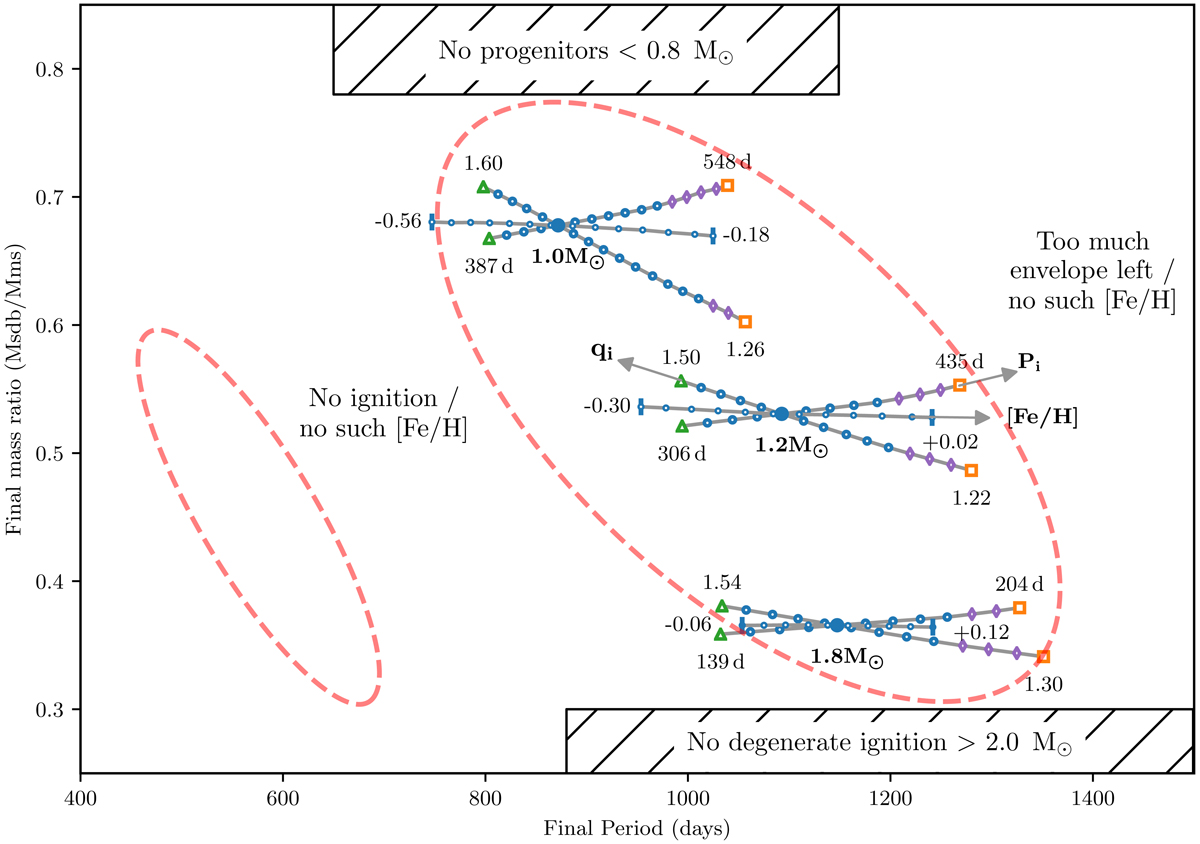Fig. 13.

Effect of the initial parameters: orbital period (Pi), mass ratio (qi), metallicity ([Fe/H]) and sdB progenitor mass on the final orbital periods and mass ratios of sdB binaries. We consider primary masses of 1.0, 1.2 and 1.8 M⊙, indicated in boldface below each set of tracks. Systems that result in hot composite sdB stars are marked with blue circles, composite sdA stars are marked with purple diamonds, while systems resulting in He-WDs or horizontal branch stars are marked with green triangles and orange squares respectively. The locations of the main and second branches of the observed P − q relation are indicated with the red dashed ellipses. The initial mass ratios and orbital periods are varied in equal steps in the range that still produces hot composite subdwarf stars for the given initial donor mass, while, for the metallicity, we show the one-sigma range of the Galactic metallicity corresponding to the time when the progenitors of each given mass formed (Table 1). This figure clearly shows that for a given initial donor mass, only a small range in the final mass ratios can be reached by varying the other initial parameters. Varying the metallicity has almost no effect on the final mass ratio, but strongly changes the final orbital period. The correlation between the final mass ratio and the initial donor mass combined with the link between metallicity and initial donor mass due to Galactic evolution then explains the observed P − q relation. See Sect. 6.4 for details.
Current usage metrics show cumulative count of Article Views (full-text article views including HTML views, PDF and ePub downloads, according to the available data) and Abstracts Views on Vision4Press platform.
Data correspond to usage on the plateform after 2015. The current usage metrics is available 48-96 hours after online publication and is updated daily on week days.
Initial download of the metrics may take a while.


